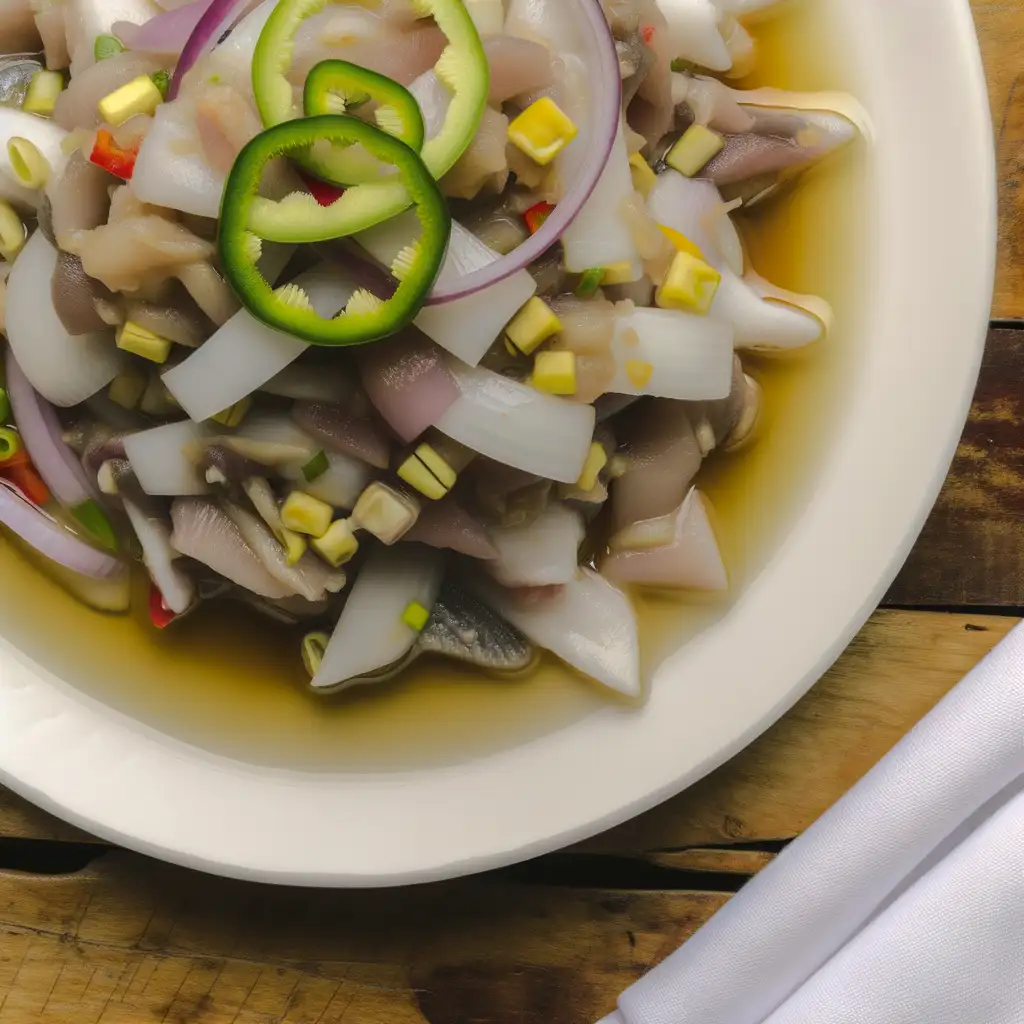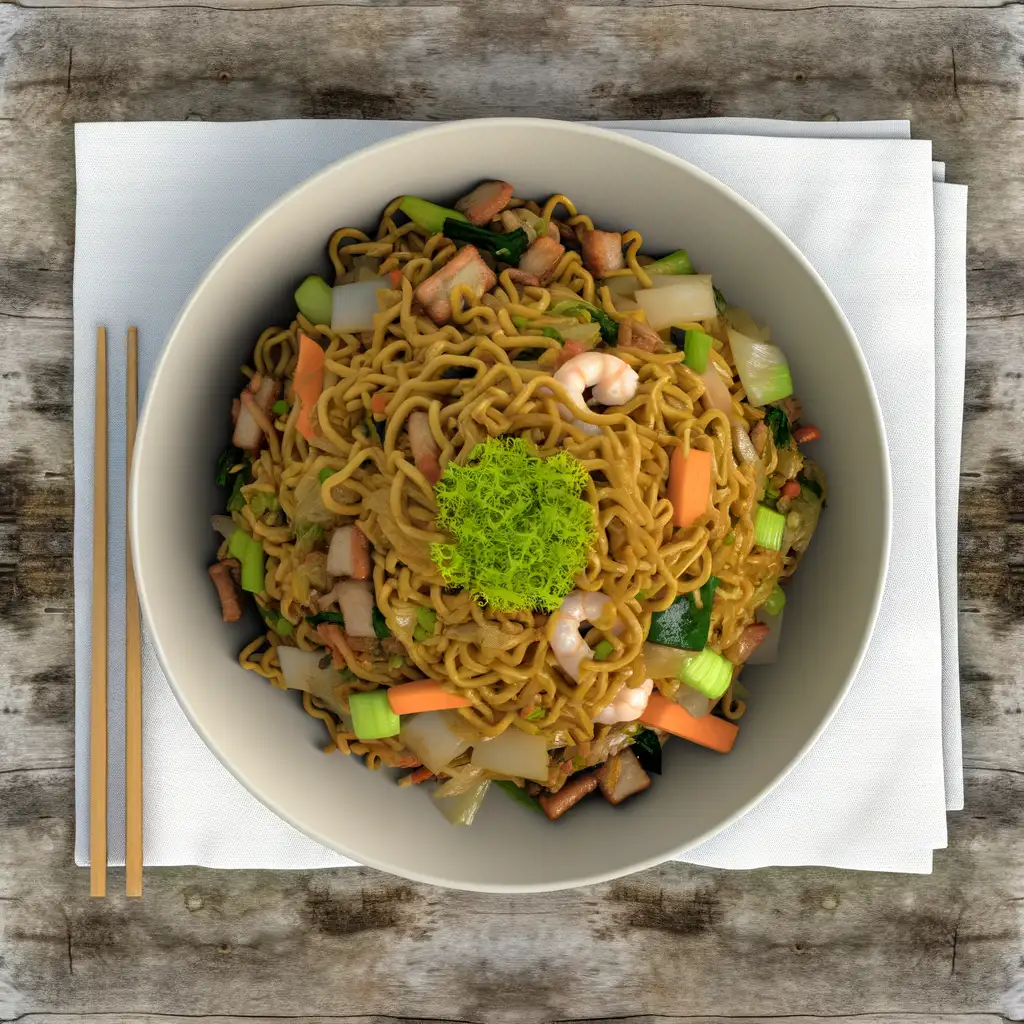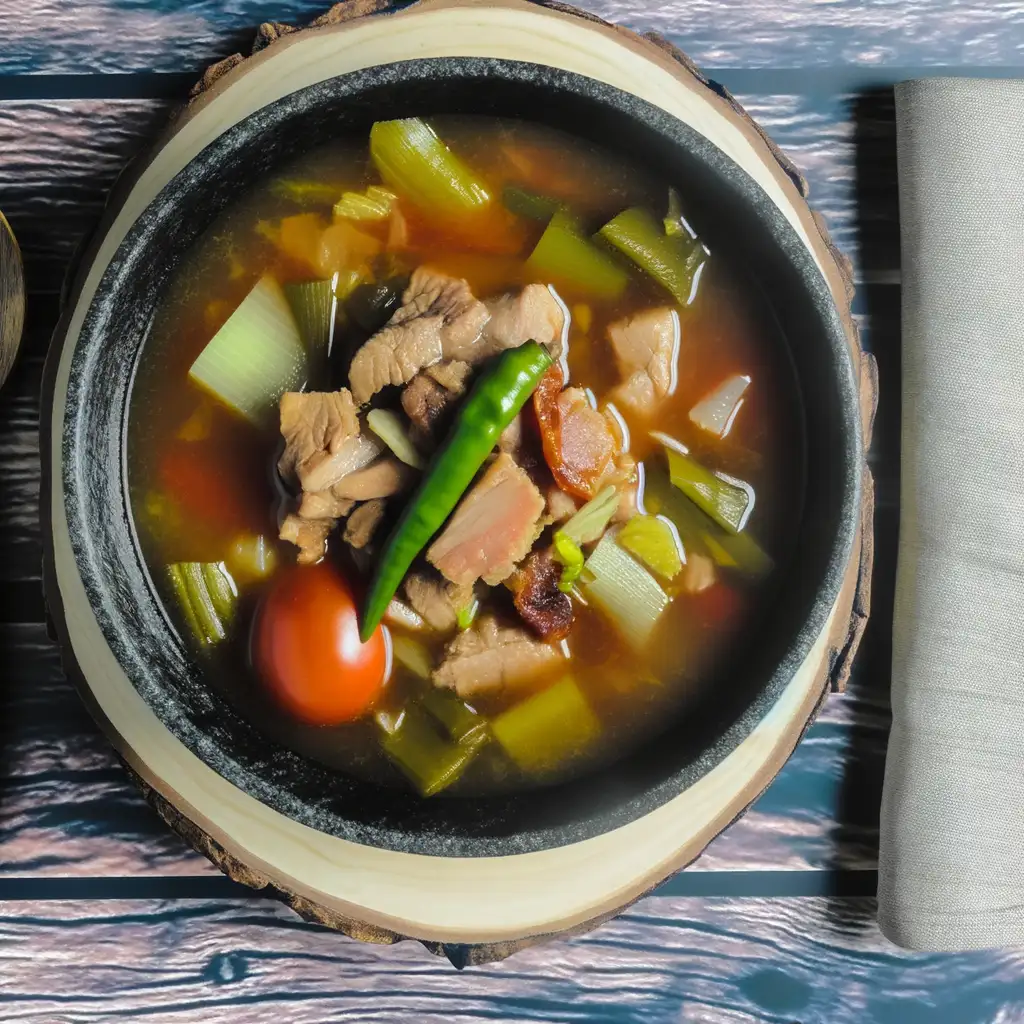



If you ever find yourself craving a place where history hums softly beneath the buzz of everyday life,Lapu-Lapu City is where you want to be. There’s this warm,inviting energy that wraps around you the moment you step off the ferry or stroll through its lively streets. The salty breeze from the nearby sea mingles with the scent of grilled seafood wafting from local eateries,tempting you to slow down and savor the moment. It’s a city that feels alive but never rushed,where the past and present dance together effortlessly. Walking around,you’ll notice the vibrant colors of jeepneys and the chatter of friendly locals greeting each other in Cebuano. The city’s rich history is palpable,especially when you visit the Mactan Shrine,a quiet spot that honors the bravery of Lapu-Lapu,the native chieftain. But beyond the monuments,it’s the everyday scenes—the fishermen hauling in their catch at dawn,the kids playing by the shore,the aroma of fresh mangoes from street vendors—that truly capture the city’s soul. And then there’s the food—oh,the food! From spicy kinilaw (a tangy raw fish salad) to sweet,sticky bibingka,every bite tells a story of local flavors and traditions. Whether you’re diving into crystal-clear waters for snorkeling or just soaking up the golden sunset on a beachside café,Lapu-Lapu City invites you to experience a genuine slice of Filipino life,full of warmth,resilience,and a joyful spirit that stays with you long after you leave.
The information on this page is currently being reviewed by Tripkliq and should be used as a guide only
Eng word: Hello
Eng pronunciation: Hello
Local language: Hello
Eng word: Goodbye
Eng pronunciation: Pah-ah-lahm
Local language: Paalam
Eng word: Thank you
Eng pronunciation: Sah-lah-maht
Local language: Salamat
Eng word: How much
Eng pronunciation: Tag-pee-lah
Local language: Tagpila
Eng word: Toilet
Eng pronunciation: Kah-sil-yas
Local language: Kasilyas
Eng word: Help me
Eng pronunciation: Tah-bahng-ee koh
Local language: Tabangi ko
Eng word: Yes
Eng pronunciation: Oh-oh
Local language: Oo
Eng word: No
Eng pronunciation: Dee-lee
Local language: Dili
Eng word: Excuse me
Eng pronunciation: Pah-sigh-loh-ah koh
Local language: Pasayloa ko
Lapu-Lapu City is named after Datu Lapu-Lapu, the first Filipino hero who resisted Spanish colonization by defeating Ferdinand Magellan in the Battle of Mactan in 1521.
The Battle of Mactan, which took place on April 27,1521, is a significant historical event where Datu Lapu-Lapu and his warriors successfully defended their land against Spanish forces led by Ferdinand Magellan.
The Magellan Shrine in Lapu-Lapu City commemorates Ferdinand Magellan's arrival in the Philippines and serves as a historical landmark for visitors interested in the country's early interactions with Europeans.
The Lapu-Lapu Monument, located in the Mactan Shrine, is a towering statue that honors Datu Lapu-Lapu's bravery and leadership during the Battle of Mactan.
Mactan Island, where Lapu-Lapu City is located, played a pivotal role in Philippine history as the site of the first recorded resistance against foreign colonization.
Lapu-Lapu City is rich in cultural heritage, showcasing the traditions and customs of the Mactan people, who have preserved their identity through centuries of change.
Lapu-Lapu City is part of the historical narrative of the arrival of Christianity in the Philippines, as Ferdinand Magellan introduced the religion during his expedition in 1521.
Before Spanish colonization, Mactan Island was already a thriving trading hub, known for its skilled boat builders and trade connections with neighboring islands and countries.
Datu Lapu-Lapu's legacy lives on in Lapu-Lapu City, inspiring Filipinos to value independence, courage, and pride in their heritage.
In Lapu-Lapu City, the most common Power Adaptor is Type A, Type B.



A whole roasted pig, known for its crispy skin and tender meat, often served during special occasions and celebrations.

A popular Filipino dessert made with crushed ice, sweetened fruits, jellies, and topped with leche flan and ube ice cream.

A Filipino ceviche made from fresh raw fish marinated in vinegar, citrus juices, and spices, typically served as an appetizer.

A sweet sticky rice cake made with coconut milk and brown sugar, often enjoyed as a dessert or snack.

Grilled tuna jaw marinated in local spices, known for its rich flavor and tender texture, often served with rice.

Stir-fried egg noodles with a mix of vegetables, meat, and seafood, often served during birthdays and celebrations for good luck.

A sour pork soup made with tamarind, tomatoes, and various vegetables, known for its tangy flavor.
Imagine stepping into a place where history hums through the streets and the ocean breeze carries the scent of salty adventure—that’s Cebu City for you. The moment you arrive,there’s this lively energy that wraps around you,a mix of old-world charm and modern buzz. You’ll find yourself wandering through colorful markets where the chatter of vendors blends with the aroma of freshly grilled street food—think sweet,smoky lechon sizzling over coals,tempting you at every corner.
Cebu’s character is a beautiful blend of the past and present. Ancient Spanish forts and centuries-old churches stand proudly alongside sleek cafes and vibrant street art. The city pulses with warmth,not just from the tropical sun but from the people who greet you with genuine smiles and stories. At night,the streets light up with music and laughter,and you can almost taste the festive spirit in the air.
What really makes Cebu unforgettable is how it feels alive in every sense. You can hear the waves crashing nearby,see the colorful jeepneys weaving through traffic,smell the tropical fruits at the market,and feel the warmth of the sun on your skin as you explore. It’s a place where culture,history,and everyday life blend seamlessly,inviting you to dive in and experience its vibrant soul firsthand.
If you ever find yourself wandering through the heart of Bohol,Tagbilaran City greets you with a warm,unhurried rhythm that feels like a gentle hug after a long journey. The city hums with life—not the overwhelming buzz of a metropolis,but a lively,welcoming energy where jeepneys rattle by and street vendors call out their fresh fruit and local snacks. As you stroll along the waterfront,the salty breeze carries the faint scent of grilled seafood mingling with tropical flowers,inviting you to slow down and savor the moment.
Tagbilaran’s charm lies in its blend of old and new. You’ll catch glimpses of Spanish-era churches standing proudly beside colorful markets where locals barter over ripe mangoes and sticky rice treats. The city’s pulse is deeply tied to its people—friendly,easygoing,and proud of their heritage. At night,the streets light up with laughter and music spilling from small eateries where you can taste the rich flavors of Boholano cuisine,like the sweet,tender kalamay or freshly caught fish cooked with coconut milk.
What really stays with you is the city’s sense of community and its connection to the sea. Whether you’re watching fishermen haul in their catch at dawn or joining a lively fiesta,Tagbilaran feels like a place where stories are shared over steaming cups of coffee and where every corner invites you to discover a new layer of its soul. It’s not just a stopover—it’s a place that quietly pulls you in and makes you want to stay a little longer.
If you ever find yourself craving a place where nature’s calm meets a laid-back island spirit,Puerto Princesa is where you want to be. The moment you step off the plane,there’s this warm,salty breeze that wraps around you,carrying the faint scent of the sea and tropical blooms. It’s a city that doesn’t rush — people move with a gentle rhythm,and the streets hum softly with the chatter of locals and the occasional strum of a guitar from a nearby café. It feels like a breath of fresh air,both literally and figuratively.
What really makes Puerto Princesa stand out is its deep connection to nature. The famous Underground River is just the beginning — lush mangroves,crystal-clear waters,and vibrant coral reefs surround the city,inviting you to explore. You can hear the calls of exotic birds in the morning and watch fishermen bring in their catch as the sun dips low,painting the sky in shades of pink and orange. The food scene here is a delightful surprise too — fresh seafood grilled right on the beach,sweet tropical fruits bursting with flavor,and local dishes that tell stories of the sea and the land.
But beyond the sights and tastes,it’s the people who make Puerto Princesa unforgettable. Their warmth and genuine smiles make you feel like you’re not just visiting,but truly welcomed. Whether you’re wandering through the bustling market or sharing a laugh with a vendor,there’s a sense of community that lingers long after you leave. It’s a place that invites you to slow down,soak in the simple joys,and leave with a heart full of stories.
If you ever find yourself craving a place where vibrant city life meets the gentle embrace of nature,Davao City is where you want to be. The moment you step off the plane,there’s this warm,welcoming energy that wraps around you—like the city itself is inviting you to slow down and savor every moment. The air carries a subtle mix of tropical blooms and the faint,salty hint of the nearby sea,while the streets buzz with a friendly hum of jeepneys and chatter in a melody of languages.
Walking through Davao,you’ll notice how the city wears its culture proudly. From the colorful street markets where vendors call out their fresh fruits and local delicacies,to the intricate weaves and crafts that tell stories of indigenous tribes,there’s a deep respect for heritage here. And the food? Oh,the food! Imagine biting into a juicy durian (if you’re brave enough),or savoring grilled tuna so fresh it practically melts in your mouth,all while sipping on a sweet,refreshing calamansi juice.
What really sets Davao apart is its balance—towering mountains and lush parks sit just a short drive from bustling urban spots. You can spend your morning hiking up Mount Apo,the Philippines’ highest peak,then wind down with a stroll along the riverwalk as the sun dips low,painting the sky in shades of orange and pink. It’s a city that feels alive but never rushed,where every corner invites you to explore,taste,and connect.
If you ever find yourself craving a place where history hums softly alongside the buzz of everyday life,Iloilo City is where you want to be. The moment you step into its streets,there’s this warm,inviting energy—like the city is gently nudging you to slow down and savor its stories. You’ll notice the colonial-era buildings standing proudly beside modern cafes,their facades telling tales of centuries past. The air carries a subtle mix of salty sea breeze and the sweet aroma of freshly baked pan de sal,making every morning feel like a comforting embrace.
Walking through Iloilo,you’ll hear the lively chatter of locals,the clinking of glasses in cozy eateries,and the distant strum of guitars from street performers. The city’s character shines brightest in its festivals,especially the Dinagyang,where vibrant costumes and rhythmic drums fill the streets with infectious joy. But even on quieter days,the genuine smiles of Ilonggos and their easygoing hospitality make you feel like you’ve found a second home.
And then there’s the food—oh,the food! From the rich,savory batchoy served steaming hot in humble noodle shops to the sweet,creamy taste of fresh mangoes,every bite is a celebration of local flavors. Iloilo isn’t just a place to visit; it’s a place to experience,where every corner invites you to pause,breathe,and fall a little in love with its soul.
Imagine stepping onto Boracay Island and instantly feeling the gentle warmth of the sun kissing your skin,while the soft powdery white sand cushions your every step. The island hums with a laid-back energy that’s both invigorating and soothing,like a secret rhythm you can’t help but sway to. Crystal-clear turquoise waters stretch endlessly,inviting you to dive in or simply float and watch the sky melt into shades of pink and orange during sunset. The salty breeze carries the faint scent of grilled seafood mingled with tropical flowers,making every breath feel like a fresh invitation to explore.
Boracay’s charm isn’t just in its stunning beaches—it’s in the vibrant pulse of its small,welcoming community. Locals greet you with genuine smiles,and the island’s culture shines through in lively street markets,where you can sample freshly caught fish,sweet mangoes,and the unmistakable tang of calamansi. At night,the island transforms as beach bars light up with laughter,music,and the clinking of glasses,creating a festive yet intimate atmosphere that feels like a celebration of life itself.
What makes Boracay truly special is how it balances adventure and relaxation. Whether you’re kite surfing over the waves,hiking to a hidden viewpoint,or simply lounging in a hammock with a cold drink in hand,the island encourages you to slow down and savor every moment. It’s a place where time seems to stretch,and every experience—whether thrilling or tranquil—leaves you with a deep sense of joy and connection.
Scammers may install skimming devices on ATMs to steal card information from unsuspecting tourists withdrawing cash.
Unlicensed money changers may offer attractive rates but shortchange tourists or use counterfeit bills during transactions.
Scammers may pose as representatives of charities or organizations, asking tourists for donations that never reach the intended cause.
Individuals may pose as tour guides or helpers, offering assistance and then demanding exorbitant fees for their services.
Scammers may offer fake tour packages or activities, taking payment upfront and disappearing without delivering the promised services.
Some taxi or tricycle drivers may overcharge tourists by not using meters or quoting inflated prices for short distances.
Crowded areas, markets, and public transportation are hotspots for pickpockets targeting tourists' wallets, phones, and valuables.
Tourists renting motorbikes, jet skis, or other equipment may be accused of damages they didn’t cause and forced to pay hefty repair fees.
Street vendors may charge tourists significantly higher prices for souvenirs, food, or drinks compared to locals.
The Philippines has strict anti-drug laws, and Lapu-Lapu City is no exception. Possession, use, or trafficking of illegal drugs is punishable by severe penalties, including long prison sentences and hefty fines. Tourists should avoid any involvement with illegal drugs and be cautious about carrying prescription medications; it is advisable to have proper documentation for any prescribed drugs.
Smoking is regulated under the Philippine Clean Air Act and local ordinances in Lapu-Lapu City. Smoking is prohibited in public places such as parks, restaurants, public transportation, and government buildings. Designated smoking areas may be available in some establishments, but tourists should always check for signage or ask staff. Violators may face fines or penalties.
Vaping is subject to similar restrictions as smoking in Lapu-Lapu City. It is prohibited in public places and enclosed spaces unless there are designated vaping areas. The sale of vape products to minors is strictly prohibited. Tourists should be mindful of local rules and avoid vaping in areas where it is not allowed.
What are other people saying about Lapu-Lapu City?
Recent Social posts about Lapu-Lapu City
There is nothing to show you for now.